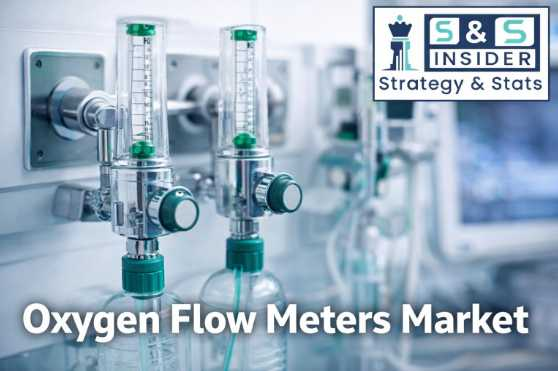In Indianapolis, families seeking support for children with developmental delays, autism spectrum disorder (ASD), or communication challenges are finding growing access to specialized services. Among the most effective interventions available are Applied Behavior Analysis (ABA) and speech-language therapy — two approaches that, when combined, can lead to stronger and faster outcomes.
While ABA and speech therapy are powerful on their own, integrating both creates a more comprehensive and individualized support system. This dual approach addresses behavior and communication simultaneously, offering children a better path to independence, social success, and improved quality of life.
For families in Indianapolis navigating early intervention, school readiness, or long-term developmental support, understanding how these therapies complement each other is key. Here’s a closer look at how combining ABA and speech therapy benefits children — and why it’s becoming a best practice in Indiana.
What is ABA Therapy?
Applied Behavior Analysis (ABA) is a data-driven, structured method used to improve behavior, learning skills, and independence. It’s especially known for its success with children diagnosed with ASD but is also effective for other developmental and behavioral conditions.
Key goals of ABA include:
Reducing problem behaviors (e.g., tantrums, aggression, self-injury)
Increasing functional skills (e.g., dressing, toileting, eating)
Teaching academic and social behaviors
Encouraging adaptive responses to daily routines
ABA therapy uses techniques like positive reinforcement, task analysis, and repeated practice to help children build new skills. It’s highly individualized, and plans are often developed by Board Certified Behavior Analysts (BCBAs).
What is Speech Therapy?
Speech-language therapy helps children improve communication, whether verbal or nonverbal. Conducted by licensed speech-language pathologists (SLPs), it addresses a wide range of challenges, including:
Delayed speech or language development
Difficulty with articulation and pronunciation
Social communication disorders
Receptive and expressive language delays
Feeding and swallowing issues
SLPs use exercises, games, visuals, and tools to help children build the skills needed to understand others, express themselves, and engage socially.
In Indianapolis, pediatric speech therapy services are often available through early intervention programs, private clinics, schools, and integrated care centers.
Why Combining ABA and Speech Therapy Matters
While ABA focuses on behavior and learning patterns, speech therapy targets communication development. Both areas are deeply interconnected. A child who struggles with communication may develop negative behaviors out of frustration. Likewise, a child with behavioral challenges may have trouble participating in speech sessions.
Combining the two therapies allows both professionals to work toward mutually supportive goals.
For example:
ABA can reinforce speech goals through positive behavior systems
SLPs can shape language strategies that support ABA learning tasks
Together, they can reduce frustration by helping a child express needs more clearly
When therapies are aligned, the child benefits from consistency, structure, and more meaningful progress. It's not about more hours — it's about coordinated care.
Real-World Examples of Integrated Progress
Consider a child in Indianapolis diagnosed with ASD who is nonverbal and exhibits frequent tantrums during transitions. On their own, ABA therapy might focus on reducing tantrums through structured routines and reinforcement. Speech therapy might work separately on building basic communication through gestures or augmentative tools like PECS (Picture Exchange Communication System).
But if those efforts happen in isolation, they may move slowly or even conflict. In a combined model:
The ABA therapist can prompt the child to request a break using visuals
The speech therapist can teach how to form requests with words or devices
Both reinforce the same skill during their respective sessions
Over time, the child learns to communicate a need, reducing the likelihood of a meltdown. It’s more efficient, more consistent, and less frustrating — for the child and the family.
Benefits of Combining ABA and Speech Therapy for Indianapolis Families
1. Improved Communication Outcomes
When ABA therapists and SLPs work together, children are more likely to generalize communication skills across settings. Whether it’s using a word at home, a sign at school, or a device in therapy, consistent practice leads to real-world application.
2. Better Behavior Through Expression
Many problem behaviors stem from communication breakdowns. Helping a child express a want, need, or feeling reduces negative behaviors and builds confidence.
3. Consistent Reinforcement Across Therapies
Children thrive on structure and consistency. Shared goals between ABA and speech therapists create a more unified experience, especially for kids who struggle with transitions or conflicting expectations.
4. Faster Progress Toward Developmental Milestones
When multiple therapists are on the same page, progress accelerates. Each session builds on the other, reducing redundancy and increasing skill mastery.
5. Reduced Family Stress
Coordinated therapy means fewer mixed messages for families. Parents receive consistent strategies and communication tools, making it easier to support goals at home.
6. Support for Diverse Learners
Integrated therapy can be tailored for children who are verbal, nonverbal, minimally verbal, or using alternative communication devices. It meets the child where they are and helps them move forward.
What Does Collaboration Look Like?
In practice, successful ABA and speech integration doesn’t mean both therapists are in the room at all times — though co-treatment sessions are sometimes beneficial. Instead, collaboration often includes:
Shared treatment plans with aligned goals
Regular team meetings to adjust strategies
Joint data tracking and skill progression
Consistent terminology and prompts across sessions
Coordinated use of communication tools (e.g., visuals, AAC devices)
Some Indianapolis clinics are designed specifically to offer this model, bringing ABA and speech therapy under one roof. Others rely on strong partnerships and open communication between providers in different locations.
Where to Find Integrated Services in Indianapolis
More therapy providers in Central Indiana are recognizing the power of collaboration and offering integrated services. When looking for combined ABA and speech therapy, families should ask:
Are both therapies available at the same location?
Do the BCBA and SLP communicate regularly?
Are treatment plans developed jointly?
Are parents included in cross-therapy communication?
How is progress measured across services?
Clinics that prioritize communication and shared goals often provide smoother experiences for children and families alike.
In Indianapolis, integrated therapy services are increasingly offered by:
Pediatric therapy centers
Autism treatment clinics
Early childhood development programs
Multidisciplinary pediatric practices
In-home therapy providers that coordinate care
What Parents in Indianapolis Are Saying
Local parents who have enrolled their children in integrated ABA and speech programs often report:
Fewer behavior incidents tied to communication frustration
Better carryover of speech skills into everyday routines
Smoother transitions between therapists
More confident and independent children
Increased trust in the therapy process
One Indianapolis mother of a 4-year-old with ASD shared, “Once the speech therapist and the ABA team started working on the same communication system, everything clicked. My son went from tantrums to using his talker to ask for snacks, and the progress hasn’t stopped.”
Challenges to Be Aware Of
While integration offers many benefits, it does come with a few considerations:
Insurance approval may vary across services
Scheduling sessions with multiple therapists can be complex
Not all therapy providers offer both services under one roof
Communication between providers requires proactive effort
Families should stay involved, ask questions, and advocate for collaborative care. Providers willing to align strategies and goals are usually open to sharing notes, updating progress, and working as a true team.
Tailoring Therapy for Each Child
Every child in Indianapolis is different. Some will benefit from frequent, co-treated sessions; others may thrive with alternating, yet coordinated therapies. The key is communication between providers and a shared commitment to the child’s overall development.
When both ABA and speech therapy are customized to each child’s strengths, learning style, and sensory needs, the potential for growth increases. The goal isn’t to overwhelm a child with too many sessions — it’s to integrate supports in a way that feels seamless and effective.
Final Thoughts: A Team Approach That Works
For Indianapolis families navigating speech delays, autism diagnoses, or behavior challenges, the journey can feel overwhelming. But with the right support — especially a team of professionals working in sync — the path forward becomes clearer.
Combining ABA and speech therapy offers more than skill-building. It offers a framework for communication, connection, and long-term independence. As more Indianapolis providers embrace integrated care models, children and families can expect faster progress, fewer roadblocks, and more confidence in every milestone.
If you’re looking for therapy services in the Indianapolis area, choose a provider that values collaboration, transparency, and child-centered care. When ABA and speech therapy are aligned, the results speak for themselves.



















